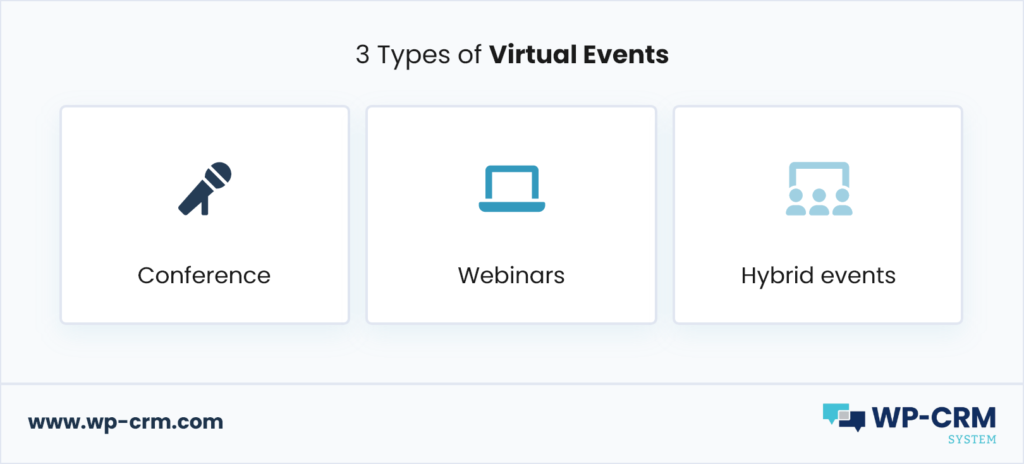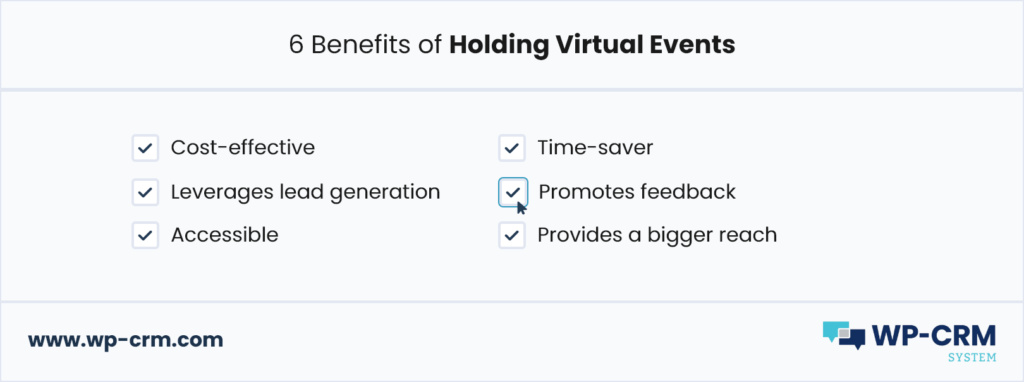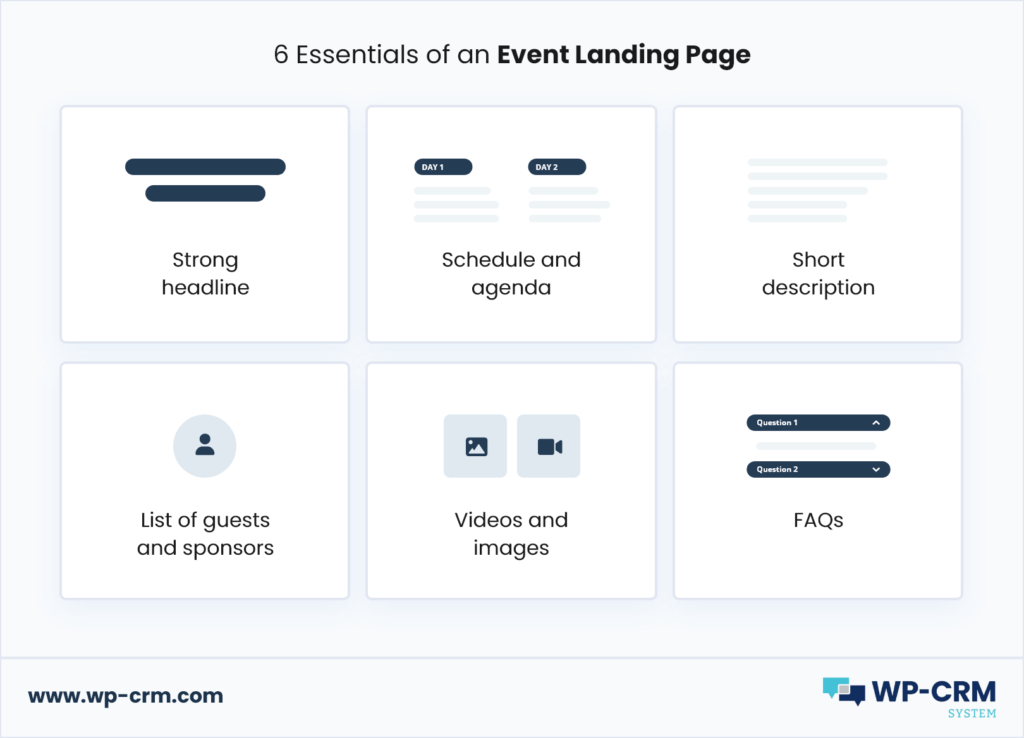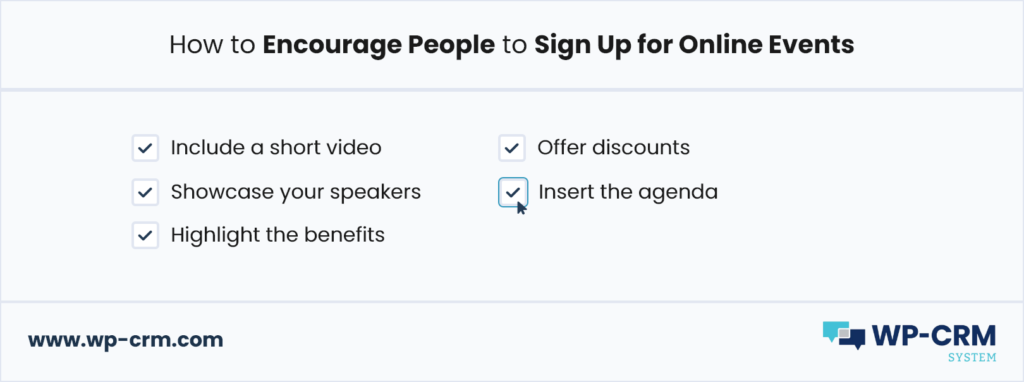8 Ways to Promote Your Virtual Events in 2021
Virtual events are the norm for most businesses these days. Ever since COVID-19 became a pandemic, a lot of companies have decided to cancel their events and conferences. This led to an influx of virtual events being held on different platforms such as Facebook, YouTube, and Zoom.
Online functions are a safer alternative to actual events, especially during these difficult times. In-person interaction can never be replaced, but for now, we’d all have to settle for the next best thing until everything is back to “normal”.
Defining Virtual Events
Virtual events are defined as online affairs that entail a group of people associating within a virtual environment. Video conferencing is the main channel for online gatherings, and the organizers can choose which tool they would want to use. These events can last for a few hours, but some companies choose to hold multi-session that can last a couple of days.
What are the Different Types of Virtual Events?
There is more to online gatherings than just chatting and video conferencing. You can choose to make your on-screen function exciting and educational by following the formats mentioned below.
Conferences
Conferences usually have live agendas that organizers have to follow, just like what they do with physical functions. Keynote speakers are usually invited to the event. Online booths, live polls, and other activities can also be included in the agenda.
Digital conferences provide attendees with the freedom to choose their preferred activity. Participants can also engage with other viewers, plus, they can usually ask questions to the speakers. Personalized online platforms are normally utilized for video conferences.
Webinars
According to Letter.ly, B2B marketers garner about 500 to 1,000 viewers per webinar. These web seminars generally last for about 30 to 40 minutes per session. Anything longer than that can bore the participants, which prompts them to leave even before the event ends.
The host can share whatever they want with the audience – videos, photos, slides, and links can be utilized. Additionally, the presenter can also share their screen with all listeners.
Growth Marketing Pro reports that some of the most used tools for webinars include Demio, Zoom, GetResponse, Livestorm, and more. These videos are typically saved and can be viewed by the audience whenever they prefer once the online seminar is over.
Hybrid Events
Hybrid conferences are defined as having both on-site and off-site attendees. These participants come together to take part in the same experience at the same time. These types of virtual events are held for people who cannot be in one location at once. A good example of a hybrid affair involves your whole team being in one location, wherein you can present videos, photos, and more. You can stream the event so your viewers can watch your content in real-time.
Hybrid functions are used to hold sales launches, company events, training sessions, town hall meetings, trade shows, meetings, and conferences.

What are the Benefits of Holding Digital Events?
According to Markletic, over 45.7% of organizers need virtual events to generate pipelines. Getting new leads is just one of the many benefits of online seminars and conferences, which is why a lot of marketers are taking advantage of this. Here are a couple more reasons why companies should try holding virtual functions:
Cost-Effective
Online seminars are a lot more cost-effective compared to in-person events. This goes for both the attendees and the organizers, as they do not have to spend on travel costs, catering, venue costs, and more. All the attendees need is a good internet connection, a desktop or laptop, and they are good to go.
Helps With Lead Generation
As mentioned earlier, online events can help generate leads. Organizers have to acquire information from their participants, including their names, email addresses, and sometimes their contact numbers. This information can be used to send out newsletters and gifts.
Accessible
With in-person events, you’d have to think about the venue’s capacity. Thankfully, with online functions, you can accommodate as many people as you prefer. However, you’d have to make sure that the platform you are using doesn’t have a limit on the number of attendees.
Time-Saver
Everything is done digitally, which means that the organizers will save a lot of time looking for a physical location, registration, organization, and a lot more. With digital events, marketers only have to think about the online promotion, virtual registration, live presentations, and surveys after the event. This can be a huge time saver, especially since these things can be done wherever, as long as there is a stable internet connection.
Encourages Feedback
Getting feedback from your participants can help you organize your next event better. With online seminars, you can easily send out surveys and polls after everything is done.
Bigger Reach
Bizzabo found out that about 80.2% of digital event organizers acquired a bigger audience with online conferences. Like we mentioned earlier, live functions are a lot more accessible than in-person seminars. All the attendee needs to do is to set an alarm or reminder for the convention, make sure that they have reliable internet, get their trusted devices ready, and they are good to go.
Now that we have discussed the different types and benefits of virtual summits, it’s now time to discuss how to promote it to your audience.

Use Sponsorships to Your Advantage
Do you need sponsors for your digital forum? Create a pitch deck that you can present to companies that you are interested in working with. Include important details such as when the event will be, what channel you will use, how many people you are expecting to attend, the speakers you have invited, and the conference’s agenda. You can also invite your partners to do co-branded events with you. This will help you save a lot more time, money, and effort with promoting your conference, plus, you get to attract their audience as well.
You can ask your partners to help promote the event by posting on their social media and sending newsletters and email updates to their leads. You can choose to provide them with the graphics and copy or ask them if they are interested in creating their own.
Additionally, you can also let people know about your partnerships and sponsorships by including their company logo on your promotional campaigns. This will help you get your sponsor’s leads’ attention, helping you increase the number of your possible attendees.
Build a Landing Page
Convince your viewers to sign up for the summit by putting up an exciting landing page. You can include vital details on the page such as what the event entails, which key speakers they can expect, the exact time and date of the agenda, and what they will benefit from attending the forum.
Ask your copywriter and designer to team up when it comes to creating the content and images. The copy should look professional yet stimulating to look at. If you want to include very specific details about the conference, then consider creating multiple pages to avoid overcrowding a single page. Here are the principal things that you should include on your landing page:
1. A powerful headline.
2. A detailed list of the event schedule and agenda.
3. A short description of what the convention is all about.
4. A list of your keynote speakers, guests, partners, and sponsors.
5. A short video about the upcoming event.
6. A list of frequently asked questions.

Choose the Right Timing
Promoting the online conference too early can make your audience forget about it eventually while marketing it too late can get in the way of you acquiring enough leads. Choosing the right timing for your online event’s marketing efforts is vital to its success.
Start creating your landing page at least a month before the conference. You should launch the page two to three weeks before the actual event so people can sign up for it on time.
Create Your Event Listing
Marketers can create their event listings on platforms such as Google and Facebook. Organizers can visit the Facebook events page and set up their own to attract possible leads. Awareness can then be boosted through paid ads or inviting people to view the page.
These Google and Facebook listings can help your attendees communicate with each other. Additionally, they can also engage with you, the organizers, if ever they have questions that they need to ask about the conference.
Amp the Anticipation Up Through Attractive Ad Copies
As we mentioned, ad copies should look stunning to capture the attention of your guests. Your advertisements should stand out from the rest, and there is no other way to do that but to come up with unique images and copy.
You can make your ads visible by posting them on social media, sending email campaigns to your leads, creating a landing page, and even marketing through other digital channels including TV and radio.
Use Email Marketing
Direct your email newsletters to the landing page and encourage your readers to sign up for the upcoming online event. You can also include a short introduction – even just a one-liner – to let your possible participant know what the digital seminar is about.
However, you have to make sure that your emails will be opened. Use irresistible headlines and do A/B testing so you’d know which one works. Send emails to the ones who signed up a few days before the seminar to remind them that it’s coming up.

Keep Your Speakers and Guests Involved
You’ve probably invited keynote speakers and influencers to speak at your digital summit, and it’s only right to ask them for help when it comes to promoting the event. Influencers usually have thousands of followers on social media, and they can aid in giving you a huge number of leads. Be ready with the promotional materials, as you’d likely be providing them for these speakers and influencers to post.
Pricing Strategies
Lastly, you have to be witty when it comes to pricing strategies for your online gathering. You can offer early-bird discounts to guests who will sign up two to three weeks before the summit goes live. Here are other ways you can sell those tickets out:
1. Create a sense of urgency by letting your buyers know that the tickets are selling out.
2. Offer bundle pricing to groups who are interested in attending the online event.
3. Give free materials to people who register early.
The tickets are not going to sell themselves, but using these tactics will help you sell those passes easily.
Conclusion
Promoting virtual conventions and gaining a massive audience is possible, thanks to the technology that we have today. Online conferences are not going anywhere, and it’s high time you bring your A-game to keep the competition at bay.
Apply these tips that we have given above and let us know what works for you!
